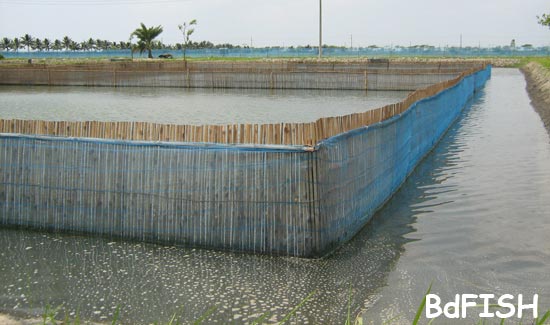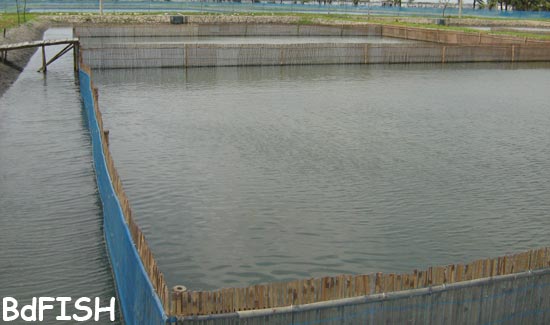
Introduction:
The feasibility of culturing crabs has received attention in some countries because of high market demand and decreasing availability. In the year 2007-2008, 439 tons of crabs and eel of 4.88 crore taka were exported from Bangladesh (FRSS, 2009). As many as 50 species of crabs have so far been identified in the coastal and marine habitats of the Bay of Bengal of which 11 are purely marine. Only three species, namely Scylla serrata (mud crab or mangrove crab), Portunus pelagicus, and P. sanguinolentus are reported to be commercially important. The mud crab, Scylla serrata is abundantly available in Cox’s Bazar, Chittagong, Barishal, Satkhira, Khulna, Noakhali and other coastal districts and is reported to be suitable for coastal aquaculture. The seeds of this species are also available throughout the coastal belt. A research effort revealed that about 375 tons of crabs are collected from mangrove areas (Sundarban-Paraban) every year.
Easy availability of natural crab seeds, high demand and market price made crab culture and its fattening very popular. Crab seeds are available throughout the year, with a peak season between January and August. Ensuring adequate feeds and proper management, 2 crops of mud crab could be harvested in a year.
Gher selection and preparation:
Emphasis should be given in selecting suitable site for crab farming. Sandy-loam or muddy areas are recommended. Gher size of 0.2 to 1.0 ha is considered good for management. Scope of exchanging water should exist. Dykes must be protected with bamboo, brick, strong netting or concrete panels. A sand bottom inhibits burrowing.
Stocking:
Naturally collected fry can survive upto 5 days in air and thus makes transportation of fry very easy. Stocking densities vary from 5000- 10,000/ha. Average weight should vary from 25 g to 30 g. Sex ratio should be maintained at 9:1 (female : male).
Feeding:
Like prawn or shrimp, crabs also take food at night. During tide, they also collect food in day time. Feeding rate should be 5% of the total crab biomass. Many ingredients may use directly or in mixed form for feeding them. Some commonly used feeds are muscle of snails, mussels; flesh of trash fishes (e.g. eel, tilapia etc.); shrimp or heads of shrimp after beheading; cattle or poultry offal; fish viscera; kitchen wastes etc. Freshwater soft-shelled snails are the most important food items of crabs. Enough food is given to prevent cannibalism.

Harvesting:
The culture period is dependent on the initial size of crab stocked and size desired at harvest. Crabs weighing of 220-250 g and with carapace widths of 12-15 cm are harvested in 5-6 months. But better management provides opportunity to harvest crabs in only three to four months. Mud crabs are very hardy and can survive several days out of water if kept moist. Cast nets and bamboo baskets are usually used for harvesting and marketing respectively.
Conclusion:
The culture fishery of Bangladesh is mainly based on fin fishes (mainly carps and few catfish and perch) and prawn/shrimp. However some other resources like crab, turtle etc. are also harvested from natural resources mainly. Crab is an important fisheries item which command good demand in the markets especially in foreign markets. This species is of high price too. Our country is highly suitable for crab culture. As, most of the crab grow naturally in the coastal gher, and since, shrimp culture practice in Bangladesh is now posing a great threat to environment due to degradation of soil fertility and productivity; crab should be cultured on more commercial basis. Suitable cost-effective technique should be introduced and proper marketing channel should be developed. Efforts are very much needed for the establishment of hatcheries of crab for artificial breeding. Sufficient extension works are also required regarding this issue.
Visited 8,374 times, 1 visits today | Have any fisheries relevant question?
